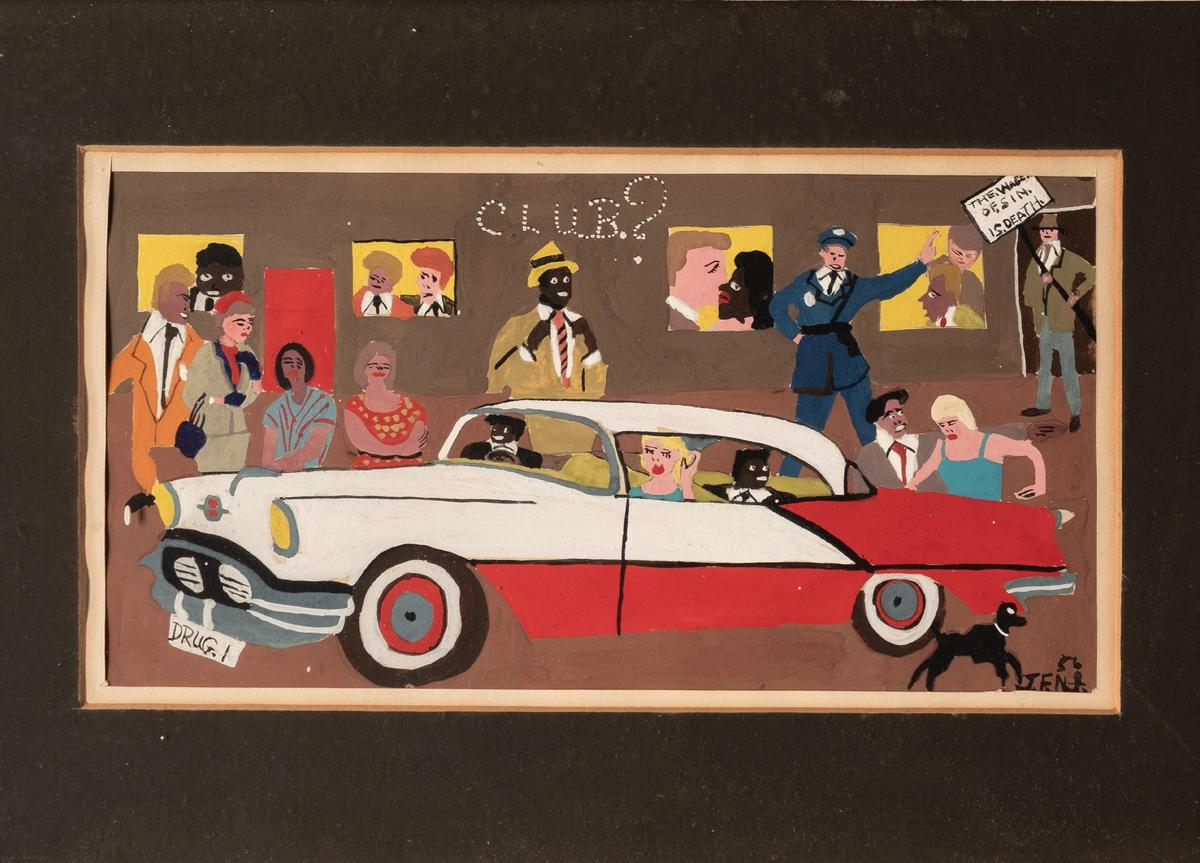The Clink in Brixton Prison, London, figures among the most acclaimed restaurants in London, offering delicious meals at a reasonable price, all prepared by inmates working towards qualification in the hospitality industry.
One might have thought, therefore, that it would be the ideal venue for a show of paintings by a former jailbird, Frank Norman. Not so; when the paintings arrived, the operations manager decided that they should not go on display, offering this explanation: “Upon seeing the images up in the restaurant … the image with the car in it & the nude picture & following feedback from the prison, I do not think these are going to be appropriate to hang in the restaurant.”
As a result, the exhibition, planned to start on 15 October and run to December, has been cancelled and the paintings returned to the family: Norman’s widow Geraldine Norman, a leading art market journalist in the late 20th century, and his grandson Joe.
Frank Norman (1930-80) grew up in a succession of Barnardo’s Children's Care Homes, and spent time in prison for petty crimes. It was there that he attended art classes. He became famous in the 1960s after writing a prison memoir, Bang to Rights and the play Fings ain’t wot they used t’be; he became a close friend of Francis Bacon and Lucian Freud.
The ten paintings that were “banned” from The Clink date from 1955 to 1965, and are in varying styles, from faux-naïve depictions of parties to abstracts in the style of Joan Miró. They are not for sale, and had remained with Frank and then Geraldine until recently when some were given to members of the family.
“There were so many, some were seriously interesting, and it seemed like a fine memorial to a section of Frank’s life,” Norman says. “[This exhibition] is part of a wider project to re-establish Frank Norman as a significant cultural figure, hence the reissue of [his 1960 book] Soho Night & Day in September. The paintings had never been exhibited before and represent the first era of his creative legacy, he initially wanted to be a painter before he started writing.”

Frank Norman's After Picasso: Les Desmoiselles de Soho (1955-65)
Of two works cited by the operations manager, one shows a car with “Drug1” as a numberplate, with groups of people around it including a policeman. Its dedication reads: “To Dick A small gift—which I painted in Wandsworth Prison!! Which somehow goes to prove that WALLS DO NOT A PRISON MAKE NOR IRON BARS A CAGE.” - July 1961. Dick was Dick Watts Jnr., the theatre critic of The New York Post and a close friend of the artist. The other is a riff on Picasso’s Les Demoiselles d'Avignon, titled After Picasso: Les Demoiselles de Soho showing nude figures on a Cubist background.
This may not be the end of the story, however; as Norman says: “We still have a few ideas for other locations.”


